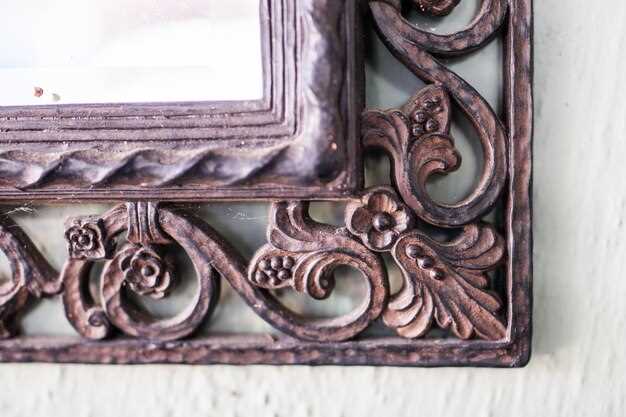
In the world of interior design, vintage-style mirrors and trim hold a special place, adding timeless elegance and charm to any space. These eye-catching pieces not only enhance the aesthetic appeal of your home but also serve as functional elements that can dramatically change the ambiance of a room. Whether you’re looking to create a sophisticated lounge or a cozy reading nook, the right mirrors and trim can help you achieve your desired exterior style.
Installing vintage mirrors and trim requires careful consideration of both design and function. Understanding the various parts involved in the installation process is crucial for ensuring a successful outcome. From selecting the right materials to knowing the best techniques for mounting, every detail matters. In this guide, we will walk you through the essential steps to seamlessly incorporate these decorative elements into your home, enhancing not just the interiors but also your overall aesthetic.
By the end of this article, you will be equipped with the knowledge needed to install vintage-style mirrors and trim with confidence. Whether you’re a seasoned DIY enthusiast or a novice looking to spruce up your living spaces, this guide will provide you with practical tips and insights to ensure your vintage installations stand the test of time and maintain their allure for years to come.
Choosing the Right Vintage-Style Mirrors for Your Vehicle

Selecting the right vintage-style mirrors for your vehicle is essential for achieving the desired classic look while ensuring functionality. Vintage mirrors often feature chrome finishes that not only enhance the aesthetic appeal but also provide durability against various weather conditions. When evaluating mirrors, consider the style that best complements the exterior design of your vehicle. Options include rectangular, round, or oval shapes, each possessing unique characteristics that can enhance the vintage vibe.
Additionally, pay attention to the size of the mirrors. Oversized mirrors may overshadow the delicate lines of a classic car, while petite mirrors may lack visibility. Striking the right balance is crucial for both fashion and function. Ensure that the chrome detailing matches or complements other chrome accents on the vehicle to create a cohesive appearance.
Don’t forget about the mounting options. Some vintage-style mirrors are designed for specific types of vehicles, which can affect their installation and effectiveness. Make sure to choose mirrors that fit your vehicle’s mounting points while providing the best possible view from the driver’s seat. Full-rimmed mirrors tend to provide a classic look, while sport-style mirrors offer a more modern twist on vintage design.
Lastly, consider the functionality. Look for mirrors that provide a clear view and are adjustable to meet your driving needs. Some mirrors come with additional features like integrated turn signals that maintain the vintage look while enhancing safety. By thoughtfully selecting vintage-style mirrors with these considerations in mind, you can elevate the exterior of your vehicle and maintain its classic charm.
Step-by-Step Installation Process for Chrome Trim and Mirrors
Installing chrome trim and mirrors is a straightforward process that enhances the exterior aesthetics of your vehicle. Follow these detailed steps to achieve a professional-looking finish.
Step 1: Gather Your Tools and Materials
Before beginning, ensure you have all necessary tools at hand: a socket wrench set, screwdrivers (flathead and Phillips), adhesion promoter, microfiber cloth, and the chrome trim and mirrors intended for installation. Clean the installation area thoroughly to ensure proper adhesion.
Step 2: Prepare the Surface
Clean the area where the chrome trim will be applied. Use a gentle automotive cleaner and a microfiber cloth to remove any dirt, grease, or wax. Make sure the surface is completely dry before proceeding to the next step.
Step 3: Test Fit the Trim
Before applying any adhesive or securing the trim, perform a test fit. Position the chrome trim along the designated areas of the vehicle’s exterior to ensure proper alignment and coverage. Make any necessary adjustments before final installation.
Step 4: Apply Adhesion Promoter
To enhance the bond between the chrome trim and the vehicle, apply an adhesion promoter along the edges of the intended area. This step will improve the longevity of the installation and help resist peeling under various weather conditions.
Step 5: Secure the Chrome Trim
Carefully peel off the backing of the adhesive tape attached to the chrome trim, if applicable. Align the trim with the previously marked positions and press firmly into place. Ensure that no air bubbles are trapped beneath the trim. If using screws or clips, drill necessary holes and secure them tightly without over-torquing to prevent damage.
Step 6: Install the Mirrors
For mirror installation, locate the mounting brackets that typically come with the new mirrors. Position the mirror housing against the exterior of the vehicle and align the brackets with the pre-drilled holes. Secure the mirror using the provided screws or bolts, ensuring that it is stable and properly oriented.
Step 7: Final Checks
After installation, perform a visual inspection of all areas. Check that the chrome trim is securely attached and that the mirrors are correctly positioned. Make any necessary adjustments to the angle of the mirrors to ensure optimal visibility from the driver’s seat.
Step 8: Clean Up
Finally, clean the installed chrome trim and mirrors with a gentle glass cleaner to remove any fingerprints or smudges. Dispose of any waste materials appropriately and store your tools for future use.
By following these steps, you will successfully install chrome trim and mirrors, elevating the exterior appeal of your vehicle while maintaining durability and style.
Maintenance Tips for Keeping Your Vintage Chrome Shine

Maintaining the shine of vintage chrome is essential for preserving the exterior appearance of your fixtures. Regular cleaning is the first step in this process. Use a soft cloth or microfiber towel, along with mild soap and water, to gently wipe down the chrome surface. Avoid harsh chemicals that can cause damage or dullness.
After cleaning, it’s important to dry the chrome thoroughly to prevent water spots and mineral deposits. Always use a dry, clean cloth to buff the surface to a brilliant finish. This not only enhances the shine but also protects against rust and corrosion.
Consider applying a specialized chrome polish designed for vintage finishes. Such products provide a protective layer that helps repel dirt and moisture, keeping your chrome looking polished for longer. Apply the polish according to the manufacturer’s instructions, typically using a clean cloth to work in a circular motion.
Avoid abrasive cleaners or scrubbers, as these can scratch and degrade the chrome. If your chrome has developed surface rust, use a fine steel wool pad or a rust remover specifically meant for chrome. Be gentle to avoid further damage while removing rust spots.
Lastly, ensure that your vintage chrome is regularly checked for signs of wear or damage. Early intervention can help maintain the integrity and shine of your chrome fixtures. Regular upkeep not only preserves aesthetics but also increases the longevity of the exterior finish.
